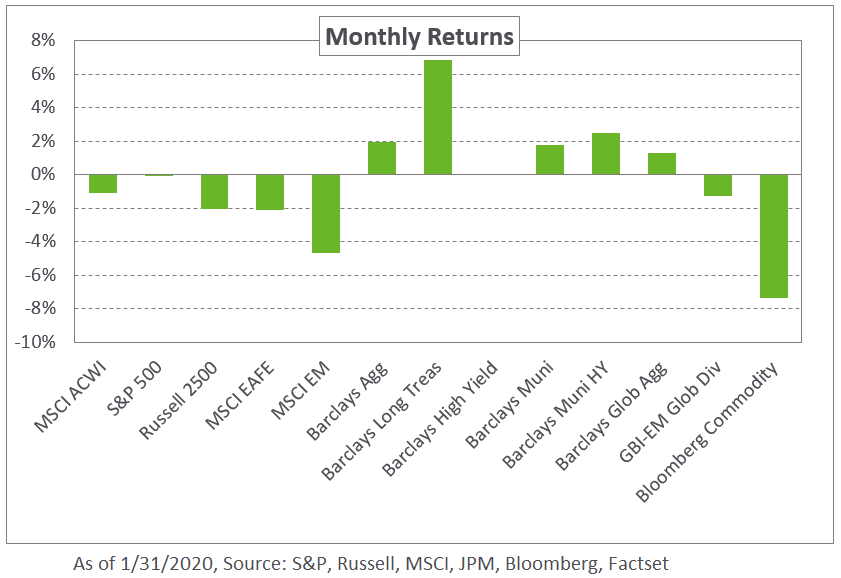After turning in a stellar performance in 2019, equities initially started the new decade on a high note, bolstered by a trade pact between the United States and China. However, optimism quickly gave way to fear amid the outbreak of the coronavirus that originated in Wuhan, China, resulting in a lackluster month for global stocks. The S&P 500 Index was flat in January, while international and emerging market equities lagged with the MSCI EAFE Index and MSCI Emerging Markets Index losing 2.1% and 4.7%, respectively; a flight-to-quality strengthened the US dollar.
This wave of risk aversion fueled demand for safe-haven assets, causing a decline in global yields. In the US, the downward shift in the yield curve caused the spread between the 10-year and 3-month yields to invert. The 10-year US Treasury fell 40 basis points to 1.52% in January. In addition, long-duration yields dipped significantly with the 30-year US Treasury falling 38 basis points to 2.01%, leading to a 6.8% gain in the Barclays US Long Treasury Index last month. Within credit, spreads broadly widened, with lower-quality issues bearing the brunt; the Barclays US Corporate High Yield OAS increased 54 basis points to 3.90%, though returns remained flat for the month. In emerging markets, local- and dollar-denominated debt were in the red, with the JPM EMBI Global Diversified and JPM GBI-EM Global Diversified Indexes both declining 1.3%, underscoring the fallout from the coronavirus.
In real assets, commodities experienced volatility on the back of the outbreak. WTI crude oil was down 15.6%, reflecting uncertainties in demand arising from travel restrictions in China. While commodities broadly declined, gold benefitted from the flight-to-quality, increasing 4.7% for the month.
While there are many unknowns related to the coronavirus, we anticipate continued volatility in the near term as the economic fallout from the epidemic is realized. As always, we remind investors to maintain a diversified, risk-balanced portfolio to help weather potential market sell-offs, and to evaluate opportunities to rebalance should larger short-term dislocations occur.




